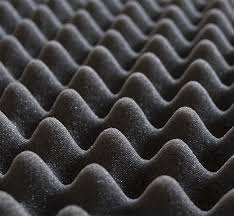
The Versatility of Semi-Rigid Polyurethane Foam
Semi-rigid polyurethane foam is a versatile material that finds wide applications across various industries. Known for its unique combination of strength, flexibility, and thermal insulation properties, this type of foam is a popular choice for many different purposes.
Construction Industry
In the construction industry, semi-rigid polyurethane foam is commonly used as an insulating material. Its excellent thermal insulation properties help in maintaining optimal indoor temperatures while reducing energy costs. Additionally, its lightweight nature makes it easy to handle and install in various building structures.
Automotive Sector
Automobile manufacturers utilize semi-rigid polyurethane foam for interior components such as headliners, armrests, and seat cushions. The material’s ability to conform to different shapes and provide cushioning makes it ideal for enhancing comfort and aesthetics within vehicles.
Packaging Applications
Due to its shock-absorbing properties and durability, semi-rigid polyurethane foam is widely used in packaging applications. It helps protect fragile items during transit by providing a cushioned layer that absorbs impact and prevents damage.
Marine Industry
In the marine industry, semi-rigid polyurethane foam is utilized for buoyancy applications. Its water-resistant properties make it an ideal choice for creating flotation devices and marine structures that require stability and durability in harsh aquatic environments.
Sustainability Considerations
As industries increasingly focus on sustainability, semi-rigid polyurethane foam manufacturers are exploring eco-friendly alternatives that reduce environmental impact. Innovations such as bio-based raw materials and recycling initiatives are being implemented to create more sustainable foam products.
In conclusion, the versatility of semi-rigid polyurethane foam makes it a valuable material across multiple sectors. With ongoing advancements in technology and sustainability practices, this type of foam continues to play a significant role in modern manufacturing processes.
7 Essential Tips for Working with Semi-Rigid Polyurethane Foam
- Ensure proper mixing of the components for uniform density and properties.
- Use appropriate safety gear such as gloves and goggles when handling the foam.
- Apply the foam in a well-ventilated area to avoid inhalation of fumes.
- Follow manufacturer’s instructions for temperature and humidity conditions during application.
- Trim excess foam carefully after it has cured to achieve desired shape and size.
- Store the foam components properly in sealed containers to prevent contamination.
- Consider consulting a professional for complex or large-scale applications.
Ensure proper mixing of the components for uniform density and properties.
To achieve consistent density and desired properties in semi-rigid polyurethane foam, it is crucial to ensure thorough mixing of its components. Proper mixing guarantees a homogenous blend of materials, which is essential for uniform distribution of additives and optimal chemical reactions. By maintaining precision in the mixing process, manufacturers can enhance the quality and performance of the foam, resulting in reliable products with consistent characteristics across batches.
Use appropriate safety gear such as gloves and goggles when handling the foam.
It is essential to prioritize safety when working with semi-rigid polyurethane foam. To ensure protection against potential hazards, it is recommended to use appropriate safety gear such as gloves and goggles when handling the foam. Gloves help prevent skin irritation or contact dermatitis that may result from direct contact with the material, while goggles shield the eyes from any splashes or airborne particles during application. By following these safety precautions, individuals can minimize risks and work confidently with semi-rigid polyurethane foam.
Apply the foam in a well-ventilated area to avoid inhalation of fumes.
It is crucial to apply semi-rigid polyurethane foam in a well-ventilated area to prevent the inhalation of fumes. Proper ventilation helps disperse any potentially harmful vapors that may be released during the application process, ensuring a safer working environment for individuals handling the foam. By following this tip, you can minimize health risks associated with exposure to fumes and promote a healthier workspace for all involved.
Follow manufacturer’s instructions for temperature and humidity conditions during application.
It is crucial to adhere to the manufacturer’s instructions regarding temperature and humidity conditions when applying semi-rigid polyurethane foam. These guidelines ensure optimal performance and the desired properties of the foam. Temperature and humidity can significantly impact the curing process and overall quality of the foam application. By following the recommended conditions, users can achieve better results and enhance the durability and effectiveness of the semi-rigid polyurethane foam in various applications.
Trim excess foam carefully after it has cured to achieve desired shape and size.
When working with semi-rigid polyurethane foam, it is important to trim excess foam carefully after it has fully cured to achieve the desired shape and size. Proper trimming ensures that the foam fits perfectly into the intended space or application, enhancing its effectiveness and aesthetics. By taking the time to trim the foam with precision, you can achieve a clean and professional finish while maximizing the material’s performance capabilities.
Store the foam components properly in sealed containers to prevent contamination.
It is crucial to store the components of semi-rigid polyurethane foam in sealed containers to prevent contamination. Proper storage helps maintain the integrity and quality of the foam components, ensuring that they remain effective when used in manufacturing processes. By sealing the containers, you can safeguard the foam components from exposure to moisture, dust, or other contaminants that could compromise their performance. This simple yet essential tip can contribute to the longevity and reliability of semi-rigid polyurethane foam products.
Consider consulting a professional for complex or large-scale applications.
When working with semi-rigid polyurethane foam for complex or large-scale applications, it is advisable to seek guidance from a professional. Consulting with an expert in the field can help ensure that the foam is properly selected, installed, and utilized according to specific project requirements. Professionals can offer valuable insights, expertise, and recommendations to optimize the performance and longevity of the foam in challenging or extensive applications. By involving a specialist, you can enhance the efficiency and effectiveness of your project while minimizing potential risks or errors associated with working with semi-rigid polyurethane foam.
